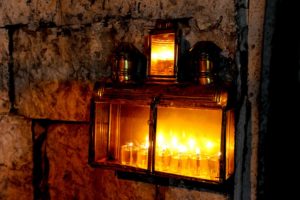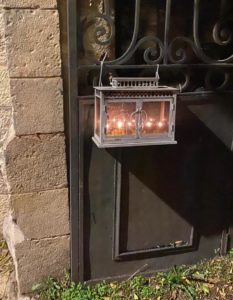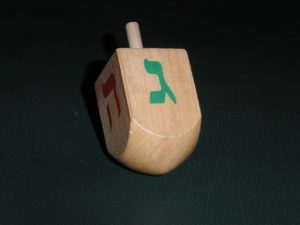Hanukkah, in Hebrew, means “dedication” or “inauguration.“ The expression “hanukkat-bayt” is used, for example, to refer to a housewarming celebration.

Hanukkah: “The Festival of Lights”
For over 2,000 years, Jews have celebrated Hanukkah on the 25th of Kislev a month in the Jewish calendar that begins, depending on the year, between the second half of November and the first half of December. The 25th of Kislev, therefore, generally falls a little before Christmas. Hanukkah commemorates the day when the Jews, led by Judas Maccabeus, regained possession of Jerusalem and rededicated the Temple, which had previously been desecrated by the Macedonian king Antiochus IV.
We read in the First Book of Maccabees:
They rose early on the morning of the twenty-fifth day of the ninth month, that is, the month of Kislev, in the year one hundred and forty-eight, and offered sacrifice according to the law on the new altar for burnt offerings that they had made. On the anniversary of the day on which the Gentiles had desecrated it, on that very day it was rededicated with songs, harps, lyres, and cymbals. (1 Mac 4:52-54)
The year mentioned in this citation corresponds to the year 148 after the establishment of the Macedonian kingdom of Syria in 312 B.C. by Seleucus I Nicator, an ancestor of Antiochus IV Epiphanes.
As a deuterocanonical feast—meaning a celebration that began after the strictly biblical period—Hanukkah is not equivalent to a Sabbath, with all its prohibitions against work. Instead, it is a festival lasting eight days, during which Jews customarily light one of the candles of a nine-branched candelabrum, called a hanukkiah in Hebrew, after each sunset. Each candle is lit using the central branch, called the shamash (helper). For this reason, Hanukkah is also known as hag ha-urim, the Festival of Lights. This has something in common with Christmas, which celebrates the return of light to the world—or to the Temple, in the case of Hanukkah.
We are informed about the existence of this eight-day festival by both Books of the Maccabees:
Then Judas and his brothers and the entire assembly of Israel decreed that every year for eight days, from the twenty-fifth day of the month Kislev, the days of the dedication of the altar should be observed with joy and gladness on the anniversary. (1 Mac 4:59).
What is striking is how quickly the celebration of the Feast of the Dedication of the Temple spread outside of Judea. This is attested to by the Second Book of Maccabees, whose purpose is to remind everyone of the importance of keeping the precepts of the Lord “wholeheartedly and with a willing spirit” (2 Mac 1:3).

Hanukkah, Jerusalem 2023
This tradition of lighting candles on a candelabra refers to an episode not recorded in historical sources, but rather in later rabbinic literature. In the form of an aggadah (exegetical text), the Babylonian Talmud (Shabbat 21b) tells that when the Jews wished to rekindle the flame of the Temple’s Candelabra (Menorah), there was a shortage of oil. In fact, only one jar of oil remained. Miraculously, the oil from this single jar was enough to keep the menorah burning for the eight days of the festival. This “great miracle” is remembered in popular Jewish culture with an object: the dreidel in Yiddish or sevivon in Hebrew. It is a type of spinning top, with four Hebrew letters inscribed on its faces: nun, gimel, hei, and pe. These are the first letters of the four words that make up the phrase “A great miracle happened here” (nes gadol haya po).

Dreidel by Roland Scheicher, Wikipedia
Finally, in modern popular culture, however, Hanukkah has become synonymous with fried food, especially in Ashkenazi culinary culture. For example, it is common to eat latkes or levivot (a fried potato and onion mixture) and the famous sufganiyot (doughnuts).
The relationship between these culinary customs and the celebration of Hanukkah could be the subject of a whole other article!
By Henri Gourinard
